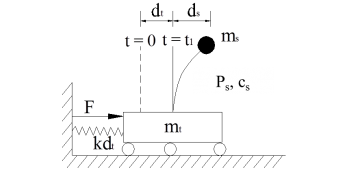Algorithm Development
Conventional shake tables employ linear controllers such as proportional-integral-derivative (PID) or loop shaping to regulate the movement. However, it is difficult to tune a linear controller to achieve accurate and robust tracking of different reference signals under payloads. The challenges are mainly due to the nonlinearity in hydraulic actuator dynamics and specimen behavior. Moreover, tracking a high frequency reference signal using a linear controller tends to cause actuator saturation and instability. In this paper, a hierarchical control strategy is proposed to develop a high performance shake table. A unidirectional shake table is constructed at the University of British Columbia to implement and evaluate the proposed control framework which consist of a high-level controller and one or multiple low-level controller(s). The high-level controller utilizes the Sliding Mode Control (SMC) technique to provide robustness to compensate for model nonlinearity and uncertainties experienced in experimental tests. The performance of the proposed controller is compared with a state-of-the-art loop shaping displacement-based controller. The experimental results show that the proposed hierarchical controller can achieve superior displacement, velocity and acceleration tracking and provide the robustness needed for the nonlinearity and noise experienced in an experimental setting.
Keywords:Hierarchical control, sliding mode control, nonlinear control, shake table tests, hydraulic actuators
Figure 1: Schematic plot of the SDOF shake table model
Figure 2: Experimental setup
Stone Panel Testing
Figure 3: Stone Panel on large scaled shaker
Acknowledgement
This work was done by Jian-Yuan Lin and Dorian Tung under the supervision of Prof. Tony Yang.


